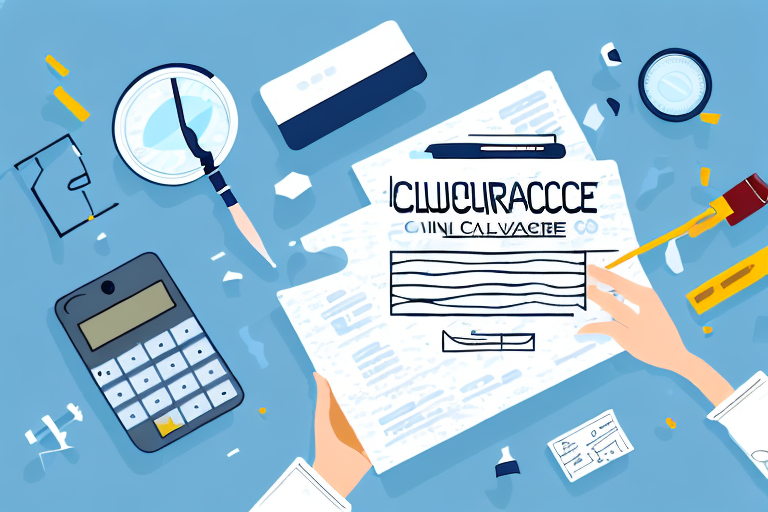Understanding the Importance of Declared Value in Shipping
The declared value of a shipment represents the maximum amount that the shipping carrier is liable for in the event of loss, damage, or theft. This value is crucial for determining the cost of shipping insurance. In the unfortunate event that a shipment is compromised, the insurance provider will compensate the shipper based on the declared value.
Accurately declaring the value of your shipment is essential to avoid financial discrepancies. Underinsurance can lead to inadequate compensation, while overinsurance may result in unnecessary premium costs.
When determining the declared value, consider the market value of the goods, including additional costs such as labor, materials, packaging, and shipping fees. Additionally, account for any potential loss of income or revenue that may occur due to the shipment's loss or damage.
Determining and Calculating Your Shipment's Value
Methods of Calculating Declared Value
There are several methods to calculate the declared value of a shipment:
- Actual Cost: The original purchase price of the item.
- Replacement Cost: The cost to replace the item at its current market price.
- Invoice Value: The value stated on the purchase invoice.
- Manufacturing Cost: The cost incurred to manufacture the item.
Selecting the appropriate method depends on the nature of the goods and the level of protection required. Reference the IATA Value Declaration Guidelines for detailed standards on declaring shipment values for air cargo.
Tips for Accurately Calculating Declared Value
- Maintain Detailed Records: Keep comprehensive documentation of all costs related to the goods, including purchase price, manufacturing costs, and any additional expenses.
- Include All Associated Costs: Factor in costs such as packaging, shipping fees, and any potential customs duties or taxes.
- Consult Experts: Engage with logistics or insurance professionals to determine the most appropriate method for calculating declared value.
- Regularly Review Values: Periodically reassess and update declared values to ensure they remain accurate and reflective of current market conditions.
Considering the market value is particularly important for rare or high-value items. Researching current market prices from reputable sources, such as industry reports or verified online marketplaces, can provide accurate valuations.
Avoiding Overvaluing or Undervaluing Your Shipment
Incorrectly valuing your shipment can lead to financial losses. Underestimating the value may result in insufficient compensation, while overestimating can incur higher insurance premiums. To maintain accuracy:
- Conduct Market Research: Use reliable sources to determine the current market value of your goods.
- Factor in Additional Costs: Include expenses related to packaging, shipping, and customs duties, especially for international shipments.
- Monitor Currency Fluctuations: For international shipments, consider the impact of exchange rate changes on the declared value.
Staying informed about market trends and costs associated with your shipment ensures a balanced approach to declaring value.
Common Mistakes to Avoid When Calculating Declared Value
- Omitting Associated Costs: Failing to include all relevant expenses can skew the declared value.
- Using Inappropriate Calculation Methods: Selecting a method that doesn't align with the nature of the goods can lead to inaccuracies.
- Miscalculating the Goods' Value: Errors in assessing the actual or market value can result in financial discrepancies.
Avoiding these pitfalls requires meticulous record-keeping and a thorough understanding of the goods being shipped.
The Impact of Declared Value on Shipping Insurance Premiums
How Declared Value Affects Premiums
The declared value directly influences the cost of shipping insurance premiums. Generally, higher declared values result in higher premiums, reflecting the increased risk for the insurer. Striking a balance between accurate declared value and reasonable premium costs is essential for cost-effective shipping insurance.
According to industry experts, accurate valuation can lead to significant savings by avoiding overinsurance and ensuring only necessary coverage is purchased.
Choosing the Right Shipping Insurance Coverage
Selecting appropriate insurance coverage involves assessing the value and nature of the shipment. Factors to consider include:
- Shipment Value: Higher-value shipments may necessitate comprehensive coverage.
- Mode of Transportation: Different transportation methods may have varying insurance requirements.
- Destination: International shipments may require additional coverage due to specific risks.
Consulting with insurance professionals can aid in selecting coverage that aligns with your business needs and shipment risks. Refer to the Insurance Information Institute for more insights on shipping insurance options.
Understanding Carrier Liability vs. Shipping Insurance Coverage
Carrier liability refers to the responsibility of the shipping company to deliver goods in good condition. However, this liability is typically limited. Shipping insurance provides additional protection, covering the declared value in cases of loss, damage, or theft beyond the carrier's liability.
For example, under the Electronic Code of Federal Regulations (CFR) for Freight Rail, carriers have specific liability limits per pound and per shipment. Shipping insurance can bridge the gap between these limits and the actual value of your goods.
It is essential to understand the distinctions between carrier liability and insurance coverage to ensure comprehensive protection for your shipments.
International Shipments and Customs Considerations
The Role of Customs in Declaring Value
For international shipments, customs authorities require accurate declaration of the shipment's value to assess duties and taxes. Incorrect declarations can lead to delays, penalties, or seizure of goods. It is imperative to comply with the customs regulations of both the origin and destination countries by:
- Providing Accurate Valuations: Ensure the declared value reflects the true market value of the goods.
- Including All Relevant Costs: Factor in shipping fees, packaging costs, and any applicable taxes or duties.
- Adhering to Documentation Standards: Submit all required documents accurately to facilitate smooth customs clearance.
Refer to authoritative sources such as the U.S. Customs and Border Protection or the European Commission Taxation and Customs Union for guidance on proper declaration practices.
Handling Issues and Disputes
What to Do if Your Shipment is Damaged or Lost in Transit
In the event of shipment damage or loss, immediate action is necessary to facilitate claims. Steps include:
- Notify the Carrier: Inform the shipping company as soon as possible about the issue.
- Contact the Insurance Provider: Initiate the claims process with your shipping insurance provider.
- Provide Detailed Documentation: Submit all relevant documents, including proof of value, shipping receipts, and evidence of damage or loss.
Maintaining thorough records and evidence can expedite the claims process and ensure appropriate compensation.
How to Handle Disputes with Shipping Insurance Providers over Declared Value
Disputes may arise regarding the declared value and compensation. To handle such disputes effectively:
- Maintain Comprehensive Records: Keep detailed documentation of all aspects related to the shipment and its value.
- Understand Policy Terms: Familiarize yourself with the terms and conditions of your insurance policy.
- Provide Evidence: Present clear evidence to support your declared value and claim.
- Consult Professionals: Seek advice from legal or insurance experts if disputes cannot be resolved directly.
Being proactive and informed can help in negotiating and resolving disputes efficiently.
Best Practices for Declaring Shipment Value
The Impact of Packaging on Declared Value and Insurance Coverage
Proper packaging plays a significant role in protecting the shipment and can influence insurance coverage. Effective packaging reduces the risk of damage, loss, or theft, potentially lowering insurance premiums. Considerations include:
- Selection of Materials: Use sturdy, protective materials suitable for the goods' fragility and value.
- Secure Sealing: Ensure packages are securely sealed to prevent tampering or accidental opening during transit.
- Labeling: Clearly label packages with handling instructions to guide proper handling by carriers.
Investing in quality packaging can enhance shipment security and support claims if issues arise.
Conclusion
Accurately calculating the declared value for shipping insurance is a critical step in safeguarding your business against potential losses due to shipment damage, loss, or theft. By understanding the importance of declared value, employing effective calculation methods, and adhering to best practices, you can ensure appropriate compensation and comprehensive protection for your shipments.
Implementing the strategies outlined in this guide will help you avoid common pitfalls, handle disputes effectively, and maintain the integrity of your shipping operations.








